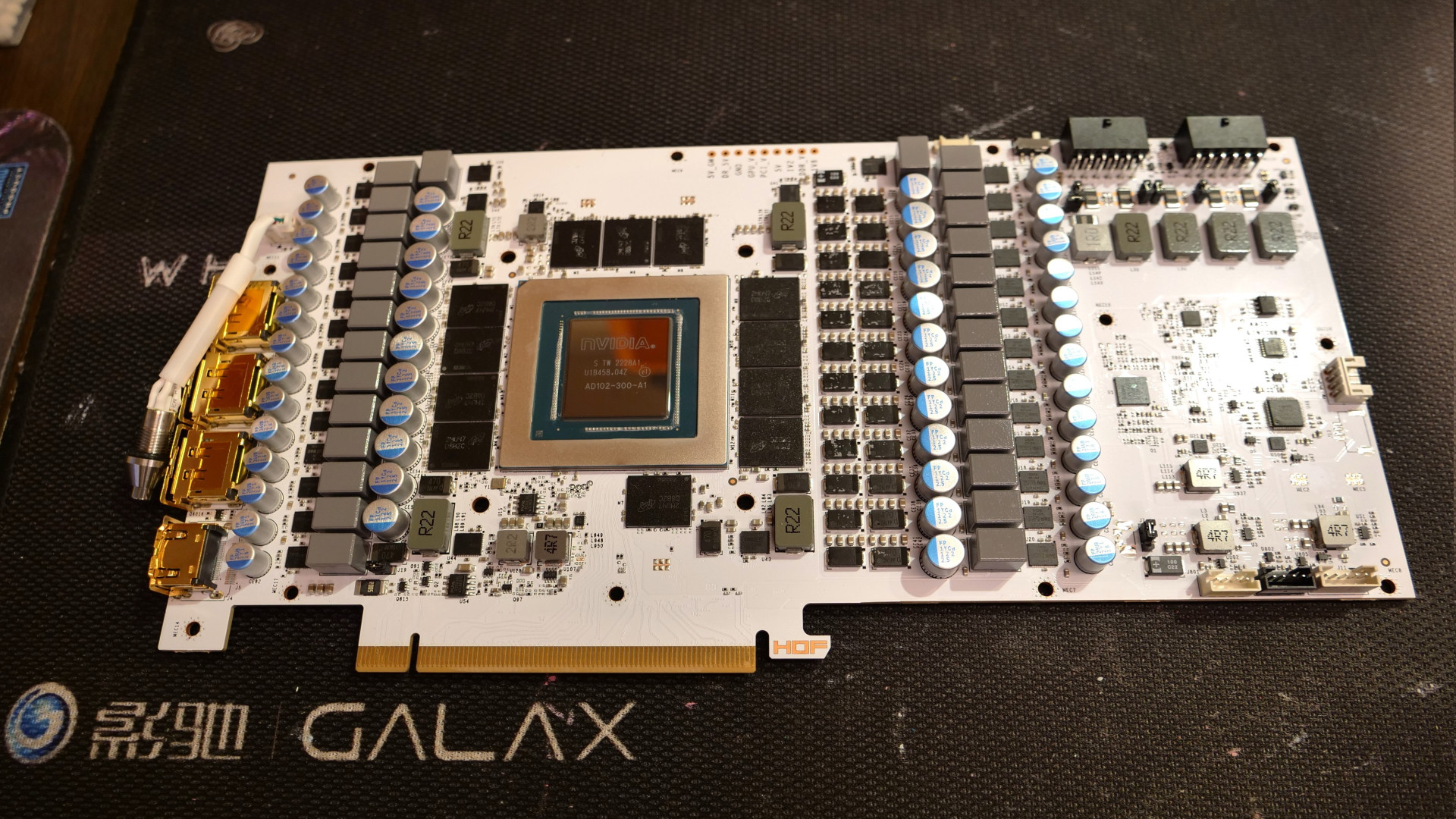Nvidia’s RTX 4090 flagship graphics card has been in the headlines recently due to controversy over melting cables, so why not double up on the cable fun? That’s the idea with a new Galax 4090 board that comes with two 16-pin power connectors – instead of the usual one – but there’s a good deal more to this story than first meets the eye.
Let’s look at the graphics card itself first, which as Tom’s Hardware (opens in new tab) reports, is a Galax RTX 4090 HOF. HOF is an acronym for the ‘Hall Of Fame’ editions that the card maker produces, which are boards made especially for attempts at beating world records and topping the rankings of extreme overclockers. And this latter point is key to the Galax 4090 here, and we’ll come back to that shortly.
The RTX 4090 HOF hasn’t been released yet, but pics of the board have appeared courtesy of Nordic Hardware (opens in new tab), with the site getting them from Norwegian expert overclocker Rauf, who has been sent a Galax HOF model for testing.
The pics show the twin 16-pin 12VHPWR connector ports, and also that the board offers a 24+4 phase VRM (heavy duty power delivery setup), with a BIOS that allows for the delivery of 1000W of power to the GPU. Yes, 1000W, compared to the 450W TGP of the graphics card, and the 600W or thereabouts typically seen when pushing the flagship with overclocking.
Analysis: What wattage, again – isn’t this just a plain daft idea?
A GPU gulping down 1000W and having twin 16-pin power connectors? Isn’t this just getting silly, now? Well, yes, it is, but the whole point of this Galax RTX 4090 HOF is that it’s pushing to the very extremes for overclockers attempting world records, as mentioned.
On the face of it, folks may worry that this all seems very unwise given that there are concerns around melting cables when using the adapter (4 x 8-pin to 16-pin) to fit the 4090 to an ATX 2.0 power supply. Could two cables double any risk – perhaps, if they are bent round tight to fit inside the case (as is the assumption for what causes the purported fire risk with the adapter setup, though we won’t know the truth of that until Nvidia complete its investigation).
However, this whole controversy is rather a red herring here, as the kind of professional overclockers who will buy this (limited edition) HOF card are people who will be using it with a top-of-the-range ATX 3.0 power supply that doesn’t need adapters anyway. (There is a PSU with twin 16-pin connectors, in case you’re wondering – the Thermaltake Toughpower GF3 1650W, with likely others to come).
Indeed, going further, most of the extreme builds this 4090 HOF will feature in will likely not have a PC case at all, and will use liquid nitrogen cooling. So, talking about melting adapter cables is really redundant in the case of a card like the Galax HOF edition, and indeed the two cables are actually required to facilitate the (admittedly ridiculous) maximum possible power of 1000W.
As to whether pushing for 1000W is wise, well, probably not, but for the kind of folks who will be playing around with this hardware, it’s safe to say they know what they’re doing and have safety precautions in place (you would hope).
To sum up: this is not a card for high-end consumers using adapters, but one for experts trying to shatter world records with exotic cooling in the main. And it goes without saying that the premium for the already very pricey RTX 4090 will be considerably jacked up when it comes to how much of a hole the HOF edition will blow in your wallet. No price has yet been confirmed, by the way.
Note that Galax wouldn’t be our first choice of graphics card vendor for the average user, and it isn’t a brand we’d typically recommend for a run-of-the-mill PC build – but as noted, the HOF series is a very different kettle of fish. And Galax has actually been making HOF editions since Nvidia’s 900 series GPUs (with no real competition now in this extreme arena, as Kingpin cards are no more since EVGA left the graphics card scene).





